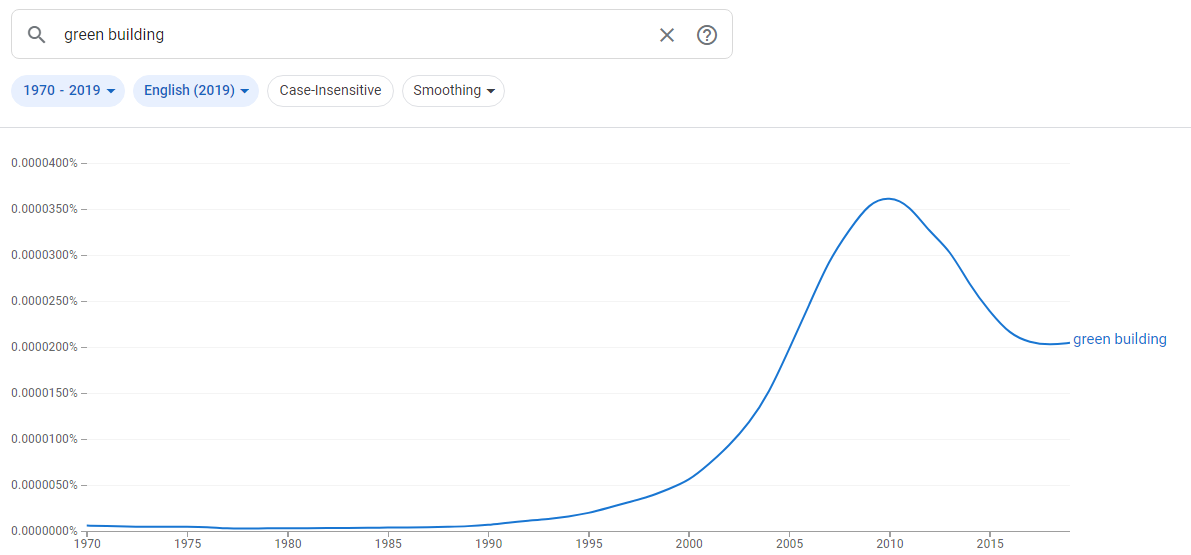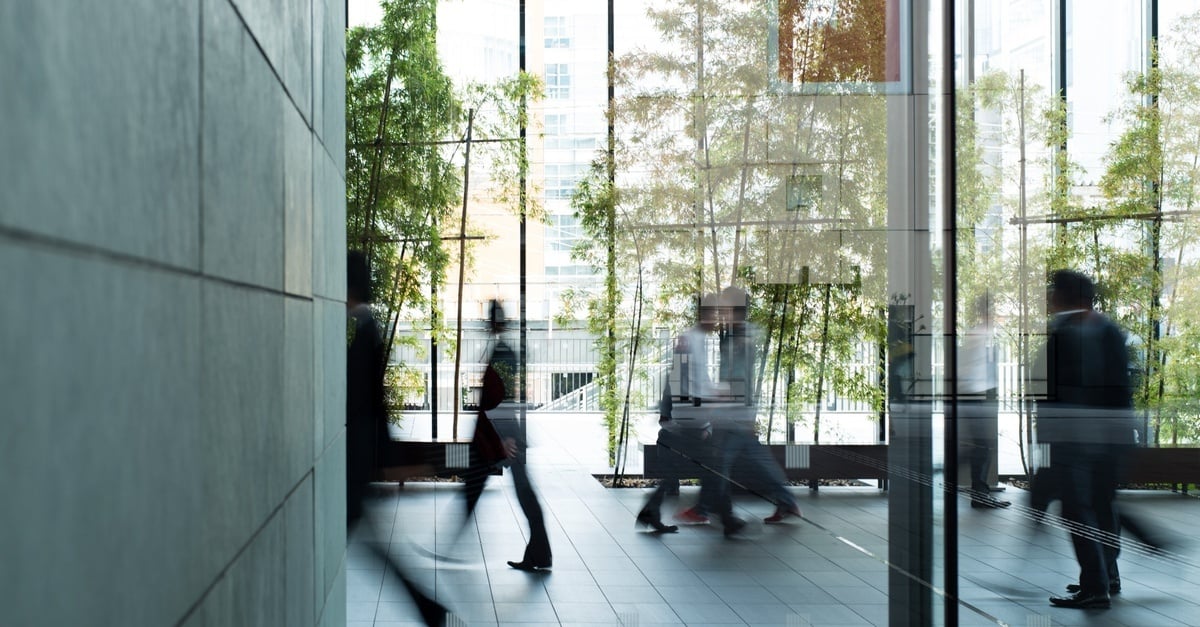Newsletter
Whether we like it or not, most of us are going to spend many years of our lives in large buildings. With over a billion information workers, modern work is frequently done in meeting rooms, cubicles, or open floor plans rather than in the field or the workshop. And with 4.2 billion urban dwellers, many of us will spend most of our out-of-office hours in schools, apartment blocks, cinemas, or other indoor spaces.
As more time than ever is being spent in commercial and residential facilities, experts have also started to look more closely at how these spaces impact the environment and the people in them. Within this growing body of knowledge, ‘green building’ and ‘healthy building’ describe two patterns in contemporary building design and management.
Building and facility managers, as well as anyone concerned with adopting sustainable and healthy practices for an organization, should understand what these terms mean, where they differ and how they overlap. Let’s dive in.
Green Buildings Prioritize the Reduction of Negative Environmental Impacts
What is a green building? The World Green Building Council defines a green building as:
A building that, in its design, construction or operation, reduces or eliminates negative impacts, and can create positive impacts, on our climate and natural environment.
The focus is on making the building and its internal systems more sustainable and better for the environment. Common examples include using non-toxic and sustainable construction materials; reducing pollution, energy, and water waste; and consideration of the urban and natural environment when making design, construction, and operational decisions.
Some of the key benefits of green building include:
- Environmental impacts: Green buildings reduce carbon emissions, and improve water and energy efficiency. According to a review by the Department of Energy mentioned here, LEED-certified produced 34% lower CO2 emissions, consumed 25% less energy and 11% less water, and diverted over 80 tons of waste away from landfills.
- Superior work environment: Studies have found employees express a preference bias for green buildings. Coupled with the benefits of natural sunlight and more exposure to nature, green buildings can drive an increase in employee satisfaction.
- Higher returns on real-estate investment: A 2018 report (PDF) has found that owners of new green buildings see a 14% decrease in operating costs over 5 years and a 7% increase in asset value.
As you can read in the summary by The Natural Stone Institute (PDF), interest in sustainable building began to gather steam in the 1970s due to the combined forces of the energy crisis and the environmental movement. Initially, most of the discussion revolved around reducing energy waste in ventilation, but over the next few decades, the industry broadened its toolkit to include solar energy, better insulation, water recycling, and increased usage of sunlight. In the 1990s interest in green buildings really took off with the establishment of the United States Green Building Council (USGBC) and the Leadership in Energy and Environmental Design (LEED) certification program.
We can see this trend reflected in the literature using Google Ngram:

With the increased awareness of climate change in recent years, green building continues to be a theme in the industry and this is likely to still be the case for years to come. However, much of the more recent discussion has shifted towards a more comprehensive look at the way buildings impact the day-to-day lives of people, including the people inside said buildings - namely, the growing trend of healthy buildings.
Healthy Buildings Prioritize the Wellbeing of Occupants
“In building, wellness is the new sustainability.”
- Architect Johnathon Penndorf, quoted in National Geographic (link below)
A healthy building is one that prioritizes the health and wellbeing of its occupants in the way it is built, designed, and managed. With almost 90% of our time spent in buildings, factors such as the air that we breathe, the water we drink, and the amount of physical activity we get in these buildings can dramatically improve our lives.
Discussion of healthy buildings picked up the pace at the beginning of the 21st century. While there isn’t a general agreement on whether it can be seen as a subset of the green building movement, it’s clear that creating a healthy building requires consideration of additional elements.
The most important determinant of a healthy building will be indoor air quality, while other key parameters include lighting, acoustics, thermal comfort, and security. An often-cited report (PDF) by the Harvard T.H. Chan School of Public Health covers the 9 foundations of a healthy building - you can find our summary here.
The key benefits of healthy buildings include:
- Better health outcomes: It’s not surprising that investing in healthier buildings makes for healthier employees. By removing common indoor pollutants such as carbon monoxide and volatile organic compounds, building managers can reduce their employees’ risk of related health problems ranging from respiratory diseases to cancer.
- Employee productivity: Healthy buildings have been shown to reduce illness and absenteeism, and increase worker productivity. Improvements in the indoor environment have been tied to 26.4% higher scores on cognitive tests.
- Increasing employee satisfaction: Healthy buildings can provide a more pleasant work environment - better-ventilated spaces feel less stuffy, while noise levels and thermal comfort are often seen as a major source of annoyance and distraction by employees. Workers in the Netherlands reported feeling happier, more energetic, and healthier in healthy offices.
While the term ‘healthy building’ is relatively new, it has already become very prominent in the industry. Two major certification programs - Fitwel and the WELL building standard - have emerged, offering specific scientifically derived standards to guide investments as well as the credibility of third-party verification. These standards also align with existing green building certifications such as LEED and BREEAM. As of June 2018, over 1000 projects were registered with these programs (PDF), led by major US commercial hubs such as New York City, San Francisco, Washington, D.C., Los Angeles, and Denver.
Where Healthy Meets Green
As we’ve seen, there’s a clear distinction between green buildings and healthy buildings - with the former dominating the conversation from the 1980s to the early 2000s, and the latter becoming more prominent since then. But in practice, they aren’t completely separate - a healthy building is often also greener, and many best practices and choices made in one field will also impact and compliment the other.
The best example for this is indoor air quality monitoring - which is crucial for employee wellbeing and productivity on the one hand but can also be leveraged to dramatically reduce a building’s energy footprint on the other. Regular maintenance of plumbing and water systems ensures workers aren’t exposed to waterborne pathogens or mold, and also means the building is more water-efficient. Further overlap can be found in increasing natural sunlight and ventilation, reducing waste, and in certification aspects.
The bottom line is this: it’s not one or the other. With everything that’s happened in the world over the past few years, healthy buildings are more important than ever and will doubtless play a major part in future conversations between employers and employees, for years to come. But focusing on employee wellbeing doesn’t mean sacrificing green building principles - more often than not, a building that’s good for occupants is also good for the planet.
If you’d like to learn more about implementing healthy building best practices, check out our previous guide:






.png?width=200&height=148&name=Menu%20C%20(2).png)

.png?width=307&height=228&name=Menu%20-%20D%20(1).png)
.png)





